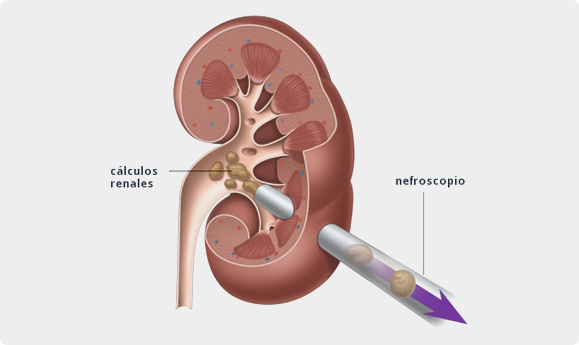Home » Lithiasis Unit » Percutaneous Surgery

Percutaneous nephrolithotomy is a treatment indicated for large lithiasis located in the kidney.
It is a surgical technique that requires general anaesthesia and in which the kidney is punctured creating a path through which a series of instruments are introduced to break the lithiasis and remove the fragments.
Despite being a technique considered as minimally invasive, it presents higher rates of complications (bleeding, infection, injury to neighbouring organs…).
Once the procedure has been performed, the patient must undergo a drainage that comes out of the kidney and allows urine to exit while controlling bleeding. In most cases, it requires the placement of an internal drainage (double J ureteral catheter).
Requires hospitalisation for a few days to monitor possible complications.

Urología Tratamiento develops its activity in: